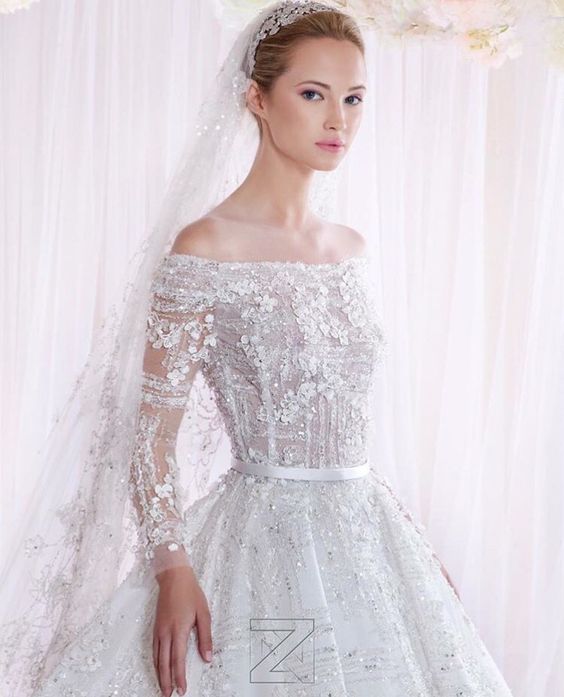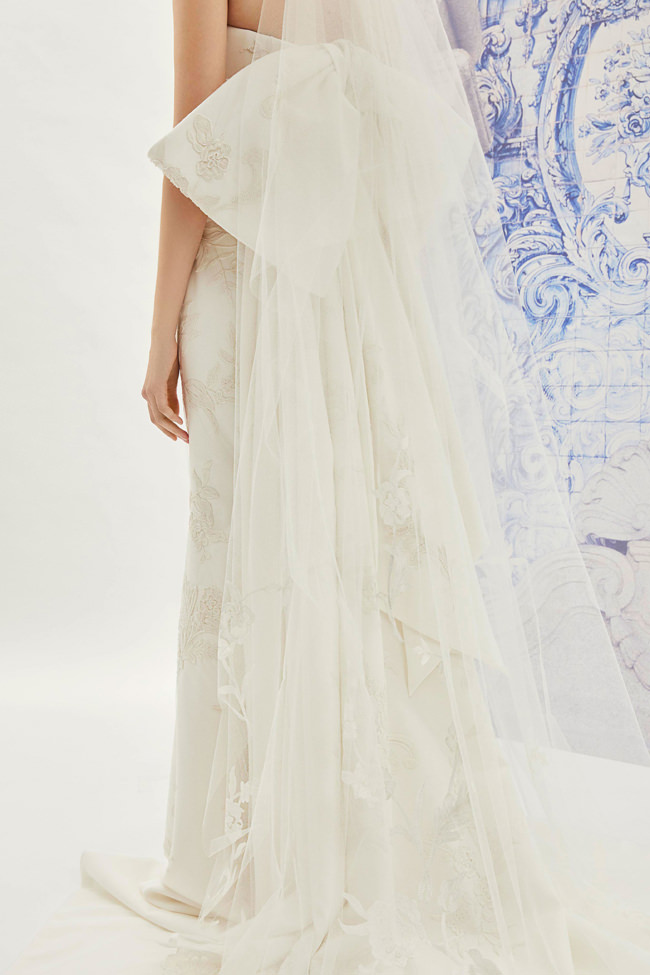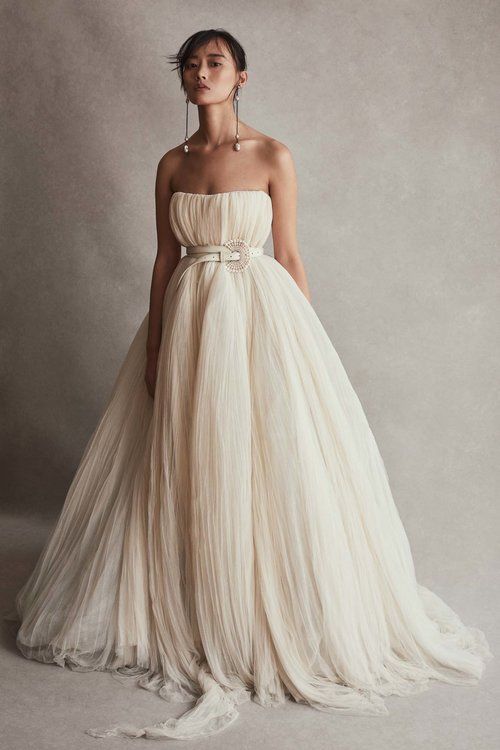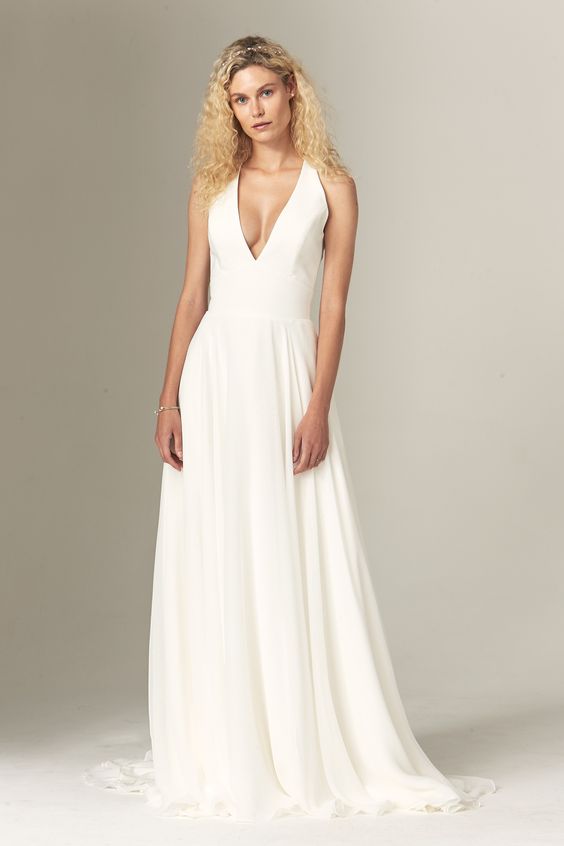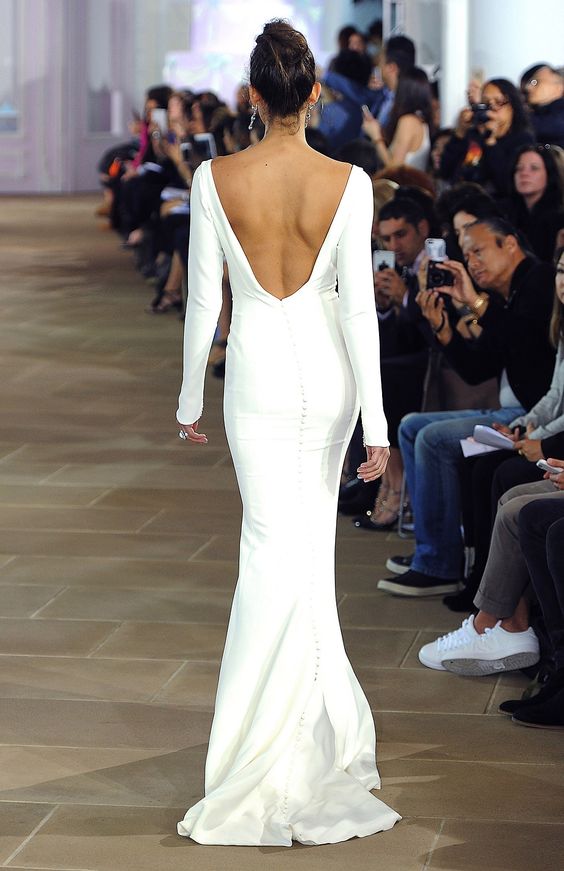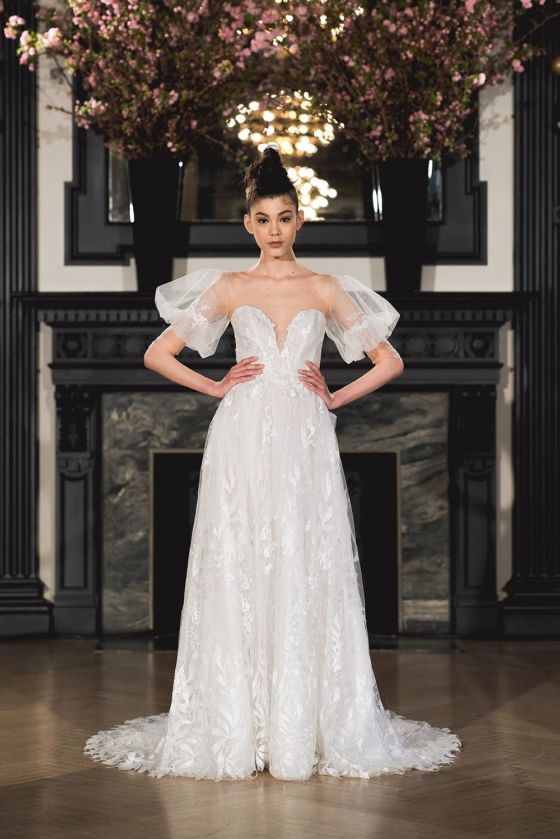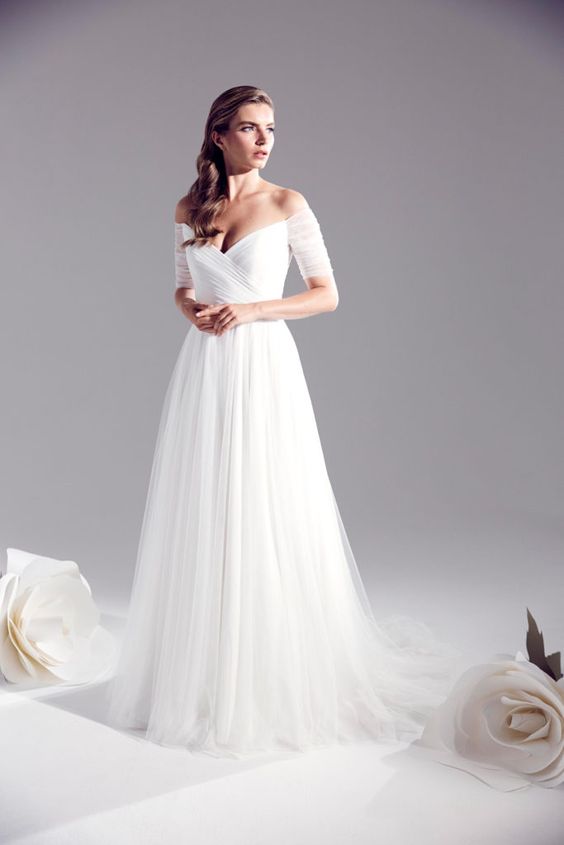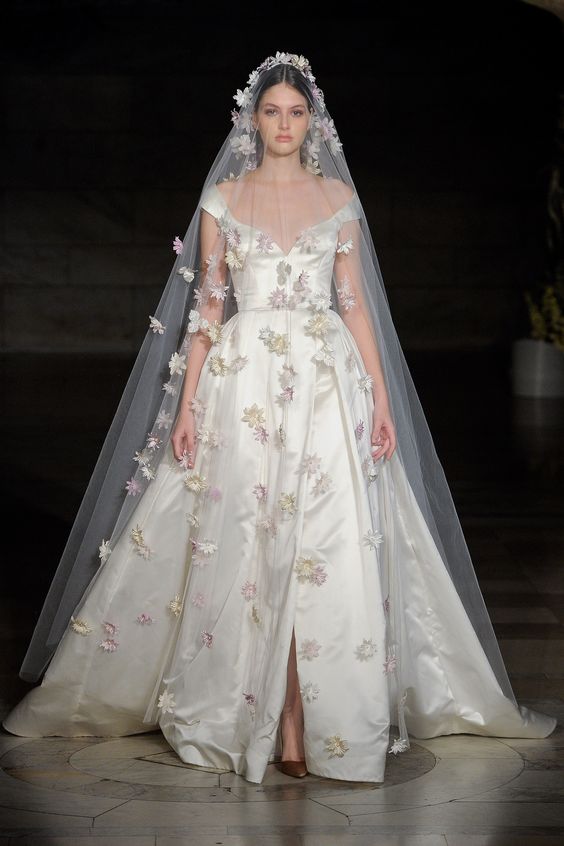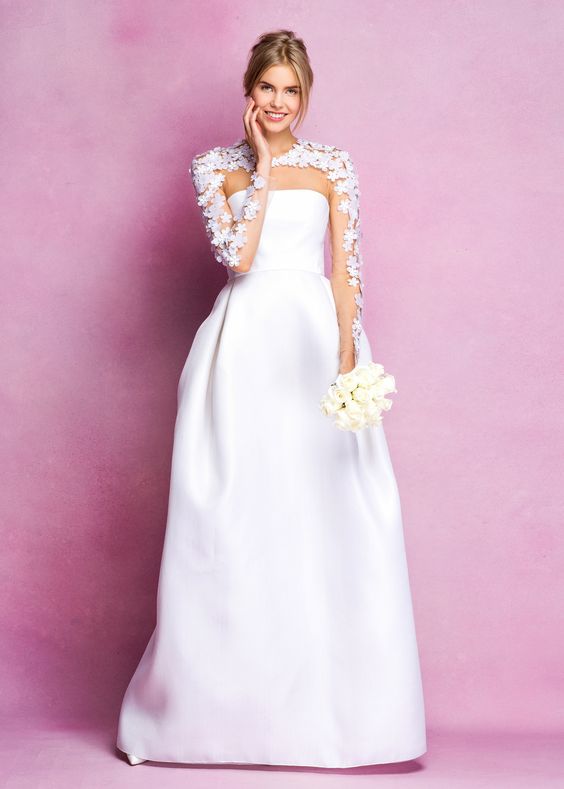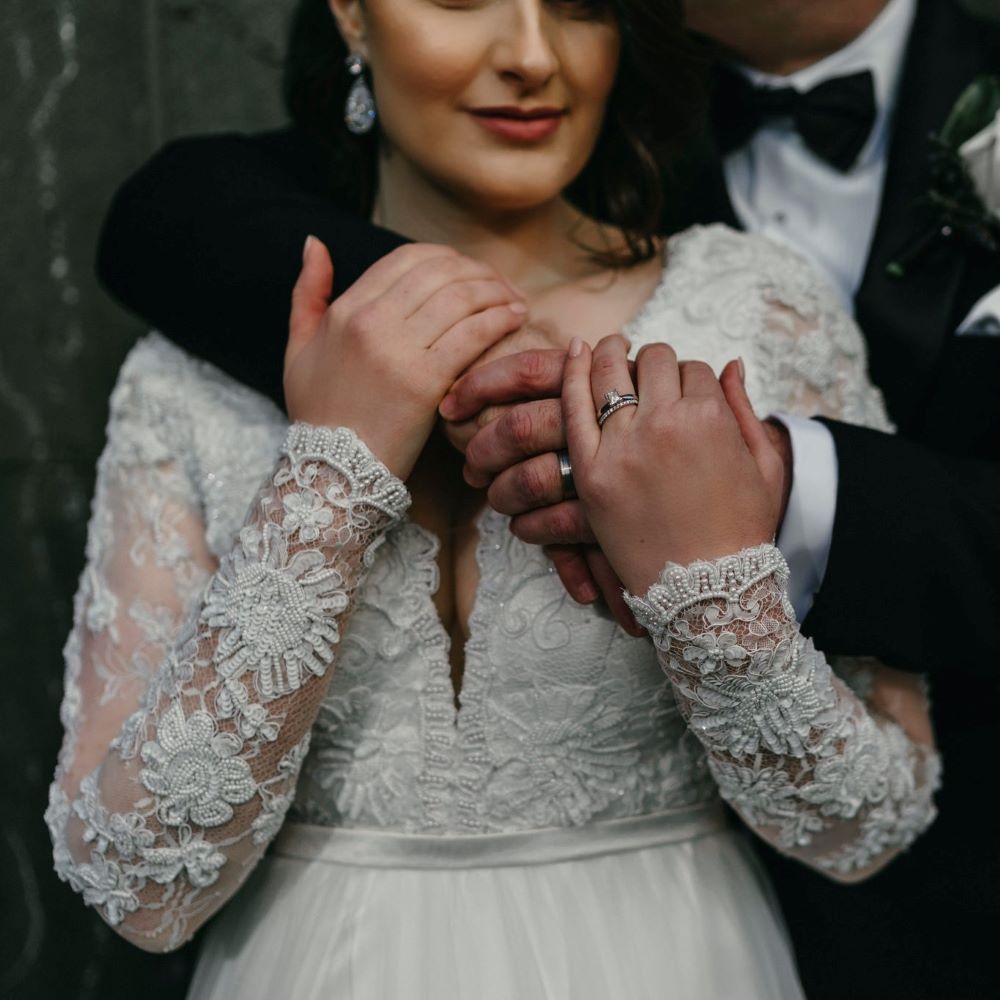There are so many Bridal fabrics to choose from, but how do you know which one is perfect for your dream wedding dress? Every gown is unique and different in its own way. When you choose to get a custom-made couture gown it’s important to select the appropriate fabric that will drape, fall and behave in the correct way for the style of gown you aspire to have. The style, cut, texture, drape, venue, dress-code and season are all crucial factors that will determine the best fabric for your wedding gown. Some fabrics may cling to the body whilst others will stick out; some may fall softly and sway smoothly as you twirl, whilst others will hold its form. Silk is undoubtedly the most popular and admired fabric to create your dream gown from. A pure silk has a fantastic resilience, elasticity, strength and durability. Silk is also a well-regarded fabric for draping beautifully, feeling incredibly soft and lightweight. And I can assure you, your silk gown will not be static, stick to your body, cause you to sweat or expand over-time unlike your synthetic/polyester fabrics. It’s important to remember that not every style of gown can be made from any fabric. Keep reading my guide on how to find the best fabric suitable for your special gown.
Silk Chiffon
Designer: Carolina Herrera
A silk chiffon is a beautiful, delicate fabric that has a very sheer and transparent element. A chiffon tends to have a very smooth texture to the surface and has a stunning soft drape. It will gather very easily, which means that you will require a minimum of double the amount to achieve a slight fullness due to its extremely fine weight. A silk chiffon can be used over the top of a non-transparent fabric such as a silk satin. It makes a perfect overlay for any bridal gown and can even be used on your sleeves for a stunning sheer element. Along with this, a chiffon can be used to make a simple throw or scarf which can be a great feature added to any bridal or evening-wear gown. A silk chiffon, along with any other delicate sheer silk can be used as a cape or hood for your bridal gown. It is attached to your shoulders and drapes seamlessly to the floor to add a beautiful element of drama and Regality.
Silk Crepe
Designer: Danielle Frankel
A silk crepe is exactly like a silk chiffon; however, it has a stunning crinkled surface and a slightly wavy texture. It’s a great way to incorporate texture into your outfit without it being too over-powering. A silk crepe behaves exactly like a chiffon and can be used as a sheer overlay for any skirt or dress. A crepe, along with any other delicate sheer fabric cannot be used to create the main dress as it is transparent. It is best used to create a flowy dress that isn’t too tight fitting or alternatively a ballgown or A-line gown.
Silk Georgette
Designer: Savannah Miller
Silk georgette is a sheer fabric similar to a chiffon. It has the same weight and transparency. The difference between a georgette and a chiffon is the surface texture, as a georgette tends to be slightly rougher rather than smooth. Both drape incredibly beautifully and will achieve the same outcome. Once again, it is perfect as an overlay for a skirt or even as sleeves. If you opt for a mermaid or trumpet style gown but want to incorporate this lovely fine, delicate fabric, then perhaps you could incorporate a ruched element on the bodice or throughout the skirt of the fitted style. A silk georgette can also be attached to the bottom half of the dress where it begins to flare out; this can create a lovely flowy and contemporary element to a fitted gown.
Silk Faille
Designer: Cushnie
A silk Faille is perfect to create most gowns from. It has a closely woven weave which ensures that your gown will not be sheer. It is appropriate to create a fit-and-flare style, a simple flowy dress, an A-line style and even a ballgown (according that there is a crinoline petticoat underneath to support the weight and retain the fullness of the style). A silk faille drapes beautifully and tends to come in a matte finish. It has a smooth surface texture and feels incredible against the skin. This fabric is fantastic for beach weddings, garden weddings, and everything in between. The fabric is also wrinkle-resistant which is an added bonus!!
Silk Satin Crepe
Designer: Ines Di Santo
A Silk Satin Crepe is one of the most popular bridal fabrics. It is very similar to a silk faille and can achieve the same styles. It’s very versatile and can create a fitted tailored look or even something soft and flowy. The fabric itself can be used on either side depending on the appearance you are after. One side has a high sheen to it which looks gorgeous in the light and adds a great level of formality. For any bride having a formal black-tie wedding then this is an ideal option. Alternatively, you can opt for a more natural contemporary look by selecting the crepe side of the fabric. This tends to have a slightly textured finish and is always matte. For brides who struggle making decisions then this is a fantastic fabric for you!!
Silk Organza
Designer: Ines Di Santo
A silk organza is a crisp sheer-like fabric with a stiffer texture similar to the effect of a bridal tulle. It has a smooth surface like a silk chiffon and can be used in the same way as most other sheer-fabrics. However, because it is stiffer it is particularly great to add fullness to any gown and is often incorporated into the ballgown style or is used as a detachable skirt. This fabric has a lovely drape but is not as flowy as your georgette or chiffon. If you are wanting a fabric with more stiffness to achieve a really full skirt then an organdie is a great option. An organdie can also be used underneath the skirt to add fullness and achieve a ballgown-like silhouette.
Silk Tulle
Designer: Jenny Packham
A Tulle is a fabric that is finely but loosely woven to the appearance of a netting or mesh. It is commonly used as the overlay for a skirt or as a veil. There are many variations of a tulle and it can get quite confusing knowing which one is appropriate for you. A fine tulle is great for your veil or for any skirt that has a slight puffiness but still resembles a soft, dreamy drape. A soft tulle is perfect for a fit-and-flare, A-line or sheath styled gown as it will drape naturally against the body and will not add a lot of fullness or definition. It has a soft and luxurious texture and will move beautifully in the wind. A stiff netting is one of the stiffest tulles on the market. It is used to create the petticoat that sits underneath the gown to add fullness and flare.
Silk Duchess Satin
Designer: Reema Acra
Duchess satin is a gorgeous, medium-bodied fabric, predominantly used for the outside of a bridal gown and for any in-built corsetry. A Duchess satin has a glossy luxurious surface on one side and a subtle matte, textured finished on the other side. It is extremely durable and strong and with the appropriate boning and interfacings, it can make a magnificent corset to cinch you in at the waist and give you the illusion of a flat stomach. Alternatively, a Duchess Satin is great to create an A-line and ballgown styled dress as the weight and stiffness allows for the silhouette to hold its shape.
Silk Zibeline
Designer: Stewart Parvin
A silk Zibeline has a satin-like finish and showcases a twill weave. Zibeline is one of the sturdiest fabrics that holds its shape when draped. Similar to a duchess satin, a zibeline is suitable for a ballgown or A-line styled dress. It also looks beautiful when made into a pleated skirt. A zibeline is a very traditional fabric but still to this day it is admired for its high durability and versatility. For brides wanting a structed gown with volume or perhaps a flat cinched in waist then this fabric is perfect for you. A zibeline has a subtle shine but is not as glossy as most satin fabrics.
Neo-Print Crepe (Scuba)
Designer: Angel Sanchez
A Neo-print crepe is commonly referred to as a scuba. It has a beautiful subtle gloss which is great for any bride who doesn’t want a matte or a luxurious shiny fabric. A Neo-print, is 2 layers of fabric fused together to create a sturdy and durable thickness and weight whilst still retaining a great level of drape. It is commonly used for gowns that want to retain a good amount of body and fullness, however because it is heavy it cannot be used for a ballgown without having a crinoline petticoat underneath to support it. Due to its beautiful weight a Neo-print is a fantastic fabric to hide those areas of imperfections as it will sit nice and flat against the body without showing off any curves or bumps. It also has a stunning smooth surface texture and is extremely comfortable.
Contact d’Italia for your dream wedding dress made with our award winning dressmakers today.


